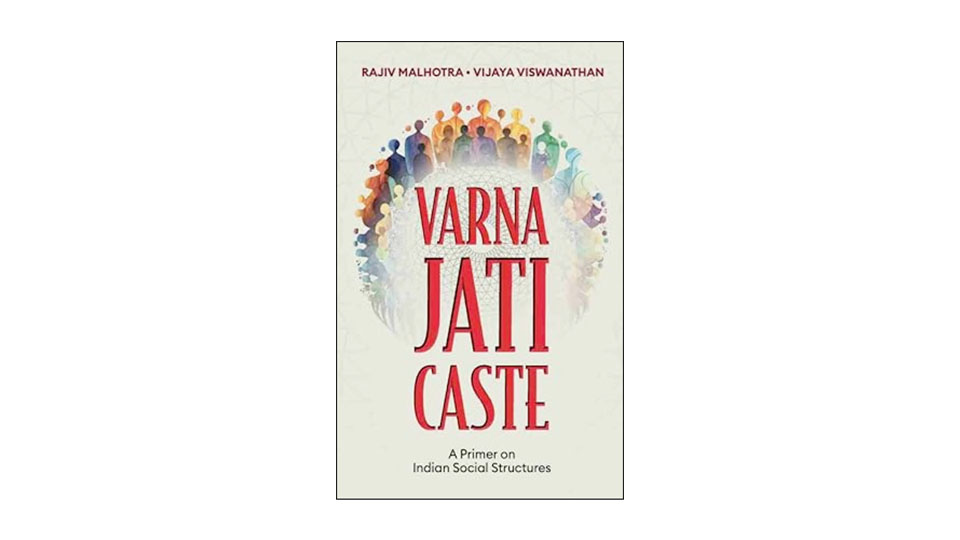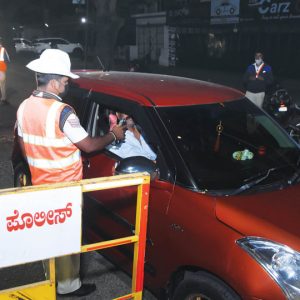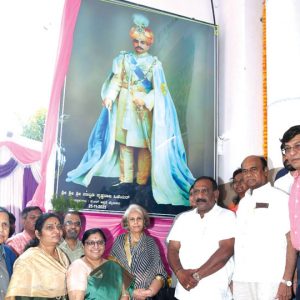By R. Chandra Prakash
[Continued from Feb. 9]
It is a fundamental truth when the authors emphasise that Hinduism is an open architecture offering a vast library of texts providing guidance and therefore there are multiple choices. Every Hindu can, and does, cherry-pick his personal choices of metaphysical interpretation, of guru for guidance (or no guru), of ishta devata (chosen deity), or rituals, of festivals, of pilgrim centres and of lifestyle. No other faith/religion provides such vast choices.
Authors are of the view that distortions have crept in over the period such as during Buddhism and the conversion process of Christianity and Islam. There are records in Hinduism substantiating the fact that a person’s varna was not fixed permanently upon birth. Parents’ varna or jati could shift to another if he was unable to follow his hereditary role or was attracted to another by inclination or talent. There are records that in Vedic times Shudras have occupied the position of kings and emperors. And Shudra kings regarded themselves as an integral part of Hindu society.
Shudras enjoyed high socio-economic status in ancient India as the Shudra artisans and craftsmen who formed a profession based guild system, were highly trained and possessed high educational standards. Such guild systems functioned till as late as the twelfth century. Subsequently due to ‘Muslim invasion, guilds became immobile and ossified, resulting in their degeneration and subdivision.’
However, it is during and after the British colonial period much of distortions started to creep into the Sanatana Dharma. Quoting extensively from Dharmapal’s book The Beautiful Tree, the authors prove that in Madras District (1825) the Shudras were the largest student group both in schools (66.9%) and at home (28.70%) in comparison with the Brahmins (7.42%) & (28.68%), and Vaisyas (15.12%) & (23.19%) respectively.
Interestingly, Hindus as a student group constituted 97.23% of total students in the school and 93.61% in home in comparison with the Muslims who constituted only 2.77% of School students group and 6.39% of Home group. The situation was said to be similar in other places all over the country at that time. The ramifications of such a steep religious divide in the educational efforts went deep into the struggle for independence and thereafter.
With such high participation in the school education Shudras earned respectable place in the contemporary society. Authors provide a diagrammatic picture of such comparatively higher socio-economic status of Shudras till such time to prove their point. It was only the simplistic interpretation of varna/jati system for the enumeration of census in 1832 that the term caste was injected to the Hindu society. And this social engineering has played a havoc in otherwise harmonious and open structured social fabric society of the Sanatana Dharma.
Untouchability – A British Social Engineering
The British extensively used untouchability as a Hindu religious curse when in reality it was during their rule that it became a rampant practice mainly due to the British toilet habits. The authors have diagrammatically displayed how untouchability became a different nomenclature category over a period — from the Fifth Varna, to Depressed Class, to Untouchables, to Harijans and finally to the Scheduled Castes. The authors summarise that “what was initially a theoretical structure, crystallised into substance at the ground level. This was incorrectly projected backwards to define the characteristic of ancient Vedic society.” And the detailed historical analysis substantiates the conclusion arrived by the authors.
Dr. Ambedkar on Castes
Understanding India’s caste politics is incomplete without knowing the contributions by Dr. B.R. Ambedkar to the subject. Dr. Ambedkar unequivocally “rejects the Western view that castes are separate races” and of the opinion that “to hold that distinctions of castes are really distinctions of race, and to treat different castes as though they were so many different races, is a gross perversion of facts.” He later reiterates “The caste system does not demarcate racial division. The caste system is a social division of people of race.”
Dr. Ambedkar not only disagreed with Gandhiji on Islam, but held “both Islam and Christianity dangerous options for Indians to adopt because he feared it would tear apart the fabric of Indian society.” The authors quote extensively from his works to substantiate his views on Buddhism and Communism.
Relevance of Caste today
The authors feel that “The original dynamics of the system were disrupted and undermined by many social and political upheavals. Over time, varna became jati, which then morphed into caste. The caste system is not mostly dead, but its ghost continue to haunt India.” With more than 36% of the country’s population now living in urban localities, with enhanced infrastructural facilities reducing the rural-urban socio-economic chasm, caste is gradually becoming socially irrelevant. However, its diabolic importance in the political sphere is what makes it relevant today. However, faster economic development will automatically eliminate even that political abuse.
Timely Book
This book is part of a series of earlier publications by Rajiv Malhotra in association with other eminent writers on various burning issues of Hinduism. Caste controversy is central to every onslaught on Sanatana Dharma. Hence, the importance of the current book gets enhanced and its publication has become timely.
[Concluded]








Recent Comments